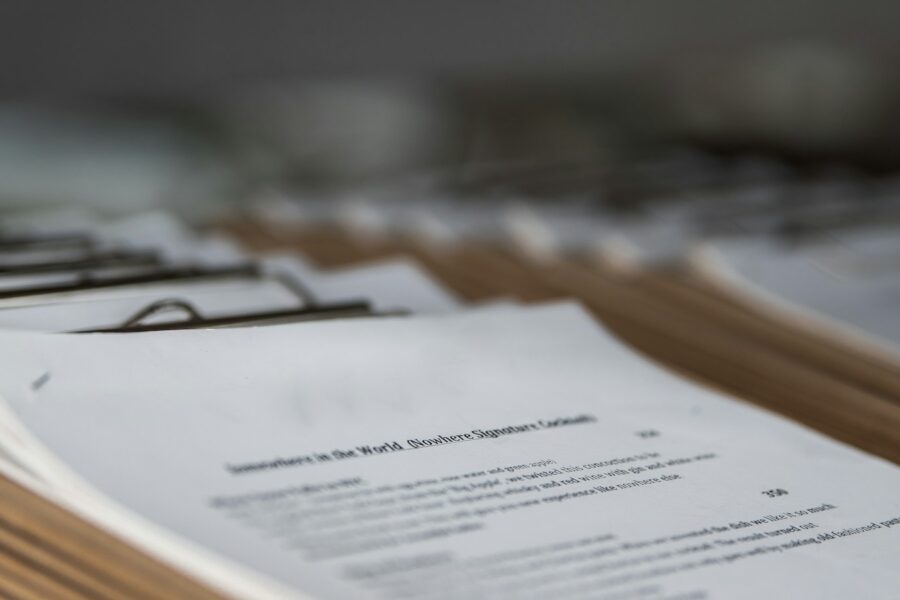What is a Secondary Applicant?
In the context of Australia immigration, understanding the role of a secondary applicant is crucial. It’s not just about adding another person to your application; it’s about strategically enhancing your chances of approval. Essentially, a secondary applicant is someone who applies alongside the primary applicant, sharing both responsibilities and benefits. This arrangement is often seen in applications for visas, where the combined credentials and circumstances of applicants can lead to a stronger case.
For Australian immigration, involving a secondary applicant can be a game-changer. It means that both individuals’ skills, work experience, and financial resources are considered, potentially making the application more appealing to the authorities. This dual-application approach is particularly beneficial in scenarios where the primary applicant may not meet all the criteria on their own. By having a secondary applicant, the collective profile is boosted.
To dive deeper, let’s consider a practical example. In the case of a Partner Visa or a Skilled Independent Visa, the addition of a secondary applicant can substantially impact the assessment process. For instance, if both partners possess relevant skills and job experience in demand within Australia, their cumulative qualifications could effectively strengthen the visa application. This isn’t just about improving odds; it’s about presenting a unified, comprehensive package that illustrates mutual benefits for both the applicants and the Australian society.
It’s vital to note that deciding to include a secondary applicant should not be taken lightly. The process involves careful consideration of the implications and requirements. Both parties must fully understand their roles and the potential impact on their immigration journey. Hence, leveraging a secondary applicant isn’t just ticking an extra box; it’s a strategic decision that could profoundly influence the outcome of your Australian immigration quest.
The Role of a Secondary Applicant
When exploring through the complexities of Australia immigration, understanding the role of a secondary applicant is pivotal. It’s not merely about adding another name to your application; it’s about enhancing your profile and strengthening your case in the eyes of the Australian immigration authorities. In my experience, the secondary applicant plays a crucial, often underappreciated role in this process.
A secondary applicant can significantly impact the overall assessment of an application. In the area of Australian immigration, the secondary applicant brings additional skills, financial resources, and qualifications to the table. This isn’t just about meeting the basic criteria; it’s about presenting a unified, comprehensive package that demonstrates the combined value and potential contribution of both applicants to Australia.
From skills assessments to evidence of financial stability, the inclusion of a secondary applicant requires careful planning and strategic thinking. Each aspect of their background and qualifications can be leveraged to fulfill or exceed the requirements set by Australian immigration policies. Whether it’s their professional experience, educational credentials, or proficiency in English, every detail matters.
Also, the secondary applicant also shares in the responsibilities inherent in the immigration process. From filling out forms accurately to preparing for interviews, their involvement is integral. It’s a partnership where commitment and cooperation are key, reflecting mutual goals and shared dreams of making Australia their new home.
Understanding the gravity of this role, it’s essential for applicants to weigh their options and consider the inclusion of a secondary applicant from a strategic standpoint. It’s not a decision to be taken lightly but one that could potentially tilt the scales in favor of a successful application. By appreciating and utilizing the role of a secondary applicant, applicants are better positioned to navigate the intricacies of Australian immigration, making their journey toward starting a new life in Australia that much smoother.
Benefits of Having a Secondary Applicant
In my experience exploring the complex arena of Australia immigration, I’ve come to appreciate the significant benefits that come with including a secondary applicant in your application process. Engaging a secondary applicant isn’t just about fulfilling an application requirement; it’s a strategic move that can enhance your chances of success in the Australian immigration journey.
One of the key advantages of having a secondary applicant is the potential for increased points in certain visa categories. Australia’s immigration system places a high value on factors such as skills, experience, and employment prospects, all of which a secondary applicant can contribute to. Their skills and qualifications can complement yours, making your overall application more robust and appealing in the eyes of the immigration authorities.
Another noteworthy benefit is the financial stability a secondary applicant can bring. Demonstrating financial resources is a critical aspect of the immigration process, and a secondary applicant can contribute to this requirement, presenting a stronger case for the sustainability of your move to Australia.
Also, the inclusion of a secondary applicant allows for a shared responsibility in meeting the rigorous requirements set by Australian immigration policies. From gathering necessary documents to undergoing health and character checks, the process can be daunting. Having someone to share these responsibilities not only eases the burden but also ensures you’re both thoroughly prepared for every step of the application process.
Finally, a secondary applicant enhances your support network. Immigrating to a new country can be an emotionally challenging experience, and having a partner, spouse, or family member as your secondary applicant means you’re not alone. This emotional and logistical support can be invaluable during the transition period and beyond.
Incorporating a secondary applicant into your Australian immigration strategy is a decision that could markedly increase your chances of success. It’s not just about adding another name to your application; it’s about presenting a unified, comprehensive, and compelling case to the Australian immigration authorities. By capitalizing on the strengths and contributions of a secondary applicant, you position yourself advantageously in the quest to call Australia home.
When is a Secondary Applicant Required?
In exploring the complexities of Australian immigration, it’s crucial to understand not just the primary applicant’s role but also when including a secondary applicant becomes essential. This aspect of the process often raises questions among those planning to make Australia their new home. And I’m here to clarify this for you.
Including a secondary applicant in your Australia immigration plan is not always mandatory, but it is highly beneficial in specific scenarios. The most common situation where a secondary applicant becomes crucial is when looking to enhance the overall strength of the application. Australian immigration policies are designed to assess the collective skills, qualifications, and financial stability of all individuals included in the application. When the primary applicant might not meet the stringent requirements alone, adding a spouse, partner, or dependent with complementary skills or financial resources can significantly increase the chances of a successful outcome.
Another scenario where a secondary applicant plays a key role is during family reunification objectives within the immigration process. Australian immigration law allows for the inclusion of family members in the application to ensure that families can move and settle together. This not only streamlines the process but also provides emotional and logistical support during the transition, making the adjustment to life in Australia smoother for everyone involved.
For those considering Australia immigration, it’s also vital to be aware of the specifications and requirements for secondary applicants set forth by the Australian government. These criteria include, but are not limited to, relationship verification, health checks, and background assessments, all of which are designed to maintain the country’s security and public health standards.
Summarizing, including a secondary applicant is a strategic move that can enhance your Australian immigration journey in multiple ways. Whether it’s adding strength to your application or keeping your family united during the process, understanding the role and requirements of secondary applicants is a pivotal step in your migration strategy.
How to Include a Secondary Applicant in Your Application
In my journey through the Australia immigration process, I’ve learned a few crucial steps on how to seamlessly include a secondary applicant in your application. Whether you’re aiming for a better chance at success or looking toward reuniting your family in Australia, understanding this part of the Australian immigration program is essential.
First, you need to identify who qualifies as a secondary applicant. This usually includes spouses, de facto partners, and dependents. Getting this step right is crucial, as it directly affects your application’s validity and the immigration requirements.
Next, gather all necessary documentation. This typically involves birth certificates, marriage certificates, proof of relationship, and evidence of dependency. Each document plays a significant role in proving the legitimacy of your application. Keep in mind; the Australian government scrutinizes these documents carefully, so accuracy and completeness are non-negotiable.
Filling out the application form is another step where precision matters. You’ll need to include details about both the primary and secondary applicants. It’s critical to answer all questions truthfully and provide as much detail as possible. Inaccuracies or omissions can lead to delays or even the refusal of your application.
Besides, prepare for health exams and background checks. Both primary and secondary applicants must meet the health and character requirements set by Australian immigration laws. These checks are designed to ensure that applicants do not pose a public health risk or a threat to the Australian community.
Finally, it’s essential to understand the financial implications of adding a secondary applicant. While it can increase your chances of success, it also means additional fees and financial requirements. Planning and budgeting for these expenses in advance can help alleviate any surprises down the line.
Throughout my application process, following these steps diligently not only made the experience smoother but also significantly improved the strength of my application.
Conclusion
Exploring the Australian immigration process can be daunting but understanding the role and benefits of a secondary applicant has the potential to change the game. I’ve shared how including a secondary applicant not only bolsters the application with additional skills and financial stability but also provides invaluable emotional and logistical support. It’s clear that this strategy can significantly improve your chances of a successful outcome. By following the outlined steps to include a secondary applicant, you’re not just strengthening your application but also paving the way for a smoother transition to life in Australia. Remember, it’s about more than just filling out forms; it’s about setting the foundation for your future. So, take the time to consider who in your life can stand with you in this journey and how their inclusion can turn your Australian dream into reality.


Leave a Comment